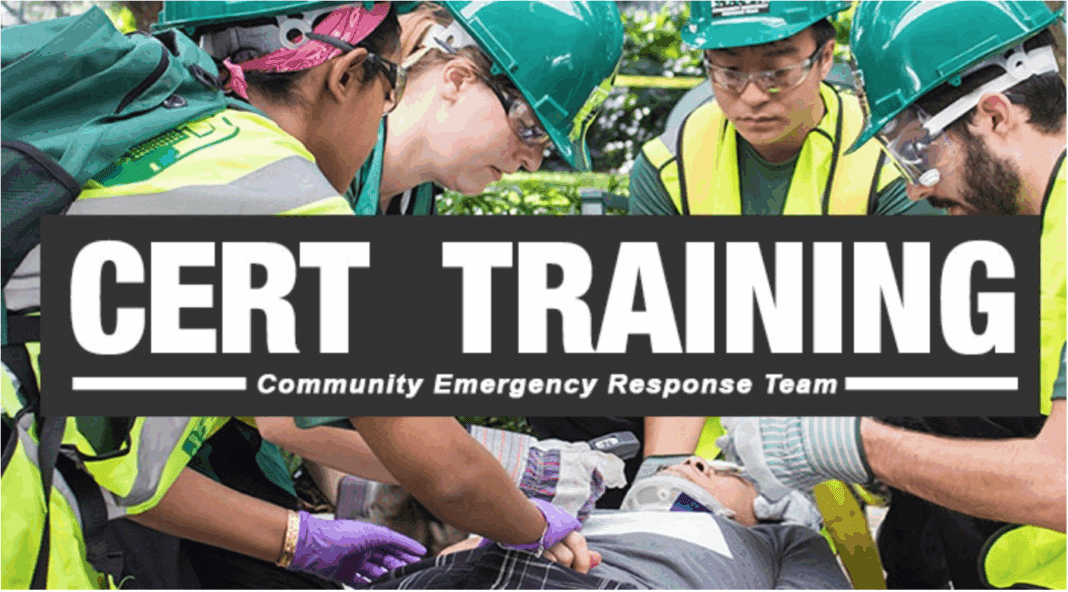Disasters in the United States—from hurricanes and wildfires to earthquakes, tornadoes, and large-scale power outages—are becoming more frequent, more intense, and more unpredictable. When emergencies strike, professional first responders often face overwhelming demand. That gap is exactly where CERT—the Community Emergency Response Team program—steps in.
CERT is a national volunteer program created by FEMA to train ordinary citizens in disaster preparedness and basic emergency response skills. Whether you live in a major city or a rural community, a CERT team exists to help strengthen local readiness and resilience. Becoming a CERT member isn’t just volunteering—it’s becoming part of the country’s most widespread grassroots emergency-preparedness network.
This article explains why CERT matters, what the training includes, how you can participate in rescue operations, and where to find official nationwide resources to start your training.
What Is CERT? A National Program for Local Preparedness
The Community Emergency Response Team (CERT) program was created by FEMA under the Department of Homeland Security. Its core purpose is to empower volunteers with foundational emergency skills so they can assist when disaster strikes.
According to FEMA:
“The CERT program educates volunteers about disaster preparedness for the hazards that may impact their area and trains them in basic disaster response skills.”
Source: FEMA CERT Overview – https://www.ready.gov/cert
CERT programs operate nationwide, run by local governments, fire departments, emergency management agencies, tribal nations, college campuses, corporations, and community organizations.
Why Joining CERT Is So Important
1. CERT Prepares You and Your Family First
Training begins with personal and household preparedness. You learn how to:
- Assess local hazards
- Store emergency supplies
- Shut off utilities
- Reduce home risks
- Protect your family from common disaster threats
Being personally prepared frees first responders to focus on the most critical emergencies.

2. CERT Provides Support When First Responders Are Overwhelmed
During major disasters, response agencies may be delayed or inaccessible due to blocked roads, power failure, or high call volume.
CERT volunteers can assist with:
- Light search and rescue
- Basic medical triage
- Fire suppression using extinguishers
- Disaster assessment
- Missing-person searches
- Traffic and crowd management
- Emergency shelter support
- Post-disaster wellness checks
CERT does not replace professional responders—rather, it expands community capacity when help is needed most.
3. You Participate in Practice Rescue Operations
CERT training includes hands-on disaster simulations. These drills give you real-world practice in:
- Victim triage
- Lifting and cribbing
- Room-by-room search techniques
- Incident command roles
- Radio communication
- Team organization
- Hazard evaluation
- Fire and smoke protocols
These scenarios are designed to simulate chaotic, realistic emergency conditions—so you’re mentally and physically prepared during a real event.
4. CERT Strengthens Community Resilience
Communities with trained CERT volunteers recover faster.
A strong CERT program can:
- Assist with evacuation centers
- Provide first aid stations
- Help coordinate volunteers
- Support public events (marathons, parades, fairs)
- Assist local government with emergency planning
CERT volunteers often become essential to community safety even outside actual disasters.
5. CERT Training Builds Skills That Carry Into Every Part of Life
The training includes:
- Disaster psychology
- Leadership under pressure
- First aid basics
- Communication protocols
- Team organization
- How to help without becoming a victim
These skills benefit workplaces, schools, families, and neighborhoods—every day, not just during catastrophes.
What CERT Training Includes (FEMA Standardized Curriculum)
All CERT programs nationwide follow FEMA’s standardized curriculum, which includes:
- Disaster Preparedness
- Fire Safety & Utility Controls
- Light Search and Rescue
- Disaster Medical Operations I & II
- CERT Organization & ICS Basics
- Disaster Psychology
- Terrorism Awareness
- Final Disaster Simulation Exercise
Official FEMA CERT course materials:
https://www.ready.gov/cert
Training is typically 20 hours, offered over several evenings or weekends, and is usually free.
Nationwide Resources for Finding a CERT Program
These links work for every state and are not region-specific.
1. FEMA CERT Program Directory (Nationwide Search)
FEMA’s official portal with national information:
https://www.ready.gov/cert
2. FEMA’s National CERT Association
Support, national membership, training materials, and contacts:
https://www.nationalcertassociation.org
3. Citizen Corps (National Registry of CERT Programs)
Find CERT programs that are part of Citizen Corps nationwide:
https://www.ready.gov/citizen-corps
4. USA.gov Emergency Preparedness Hub
Government-verified resource for emergency training and volunteering:
https://www.usa.gov/emergency-preparedness
5. American Red Cross Training & Preparedness Resources
Optional supplemental skills:
https://www.redcross.org/take-a-class
These links help anyone in the U.S. find programs, regardless of state.
How to Join CERT Anywhere in the United States
- Visit the national CERT site: https://www.ready.gov/cert
- Use the “Find a Program” tool or contact local emergency management.
- Register for the next CERT Basic Training course.
- Complete the classroom + hands-on skills modules.
- Participate in the final disaster simulation.
- Join your local CERT team as an active volunteer.
- Attend drills, refreshers, and special-skills workshops throughout the year.
Conclusion: Becoming Part of CERT Is One of the Most Important Things You Can Do
Joining a Community Emergency Response Team is more than an act of service—it is a commitment to preparedness, responsibility, and community resilience. By learning life-saving skills, participating in rescue drills, and staying engaged with local volunteers, you become part of a nationwide network that strengthens the country from the ground up.
If you want to make a meaningful impact during emergencies—and be truly prepared for whatever comes next—joining CERT is one of the most practical and powerful steps you can take.








